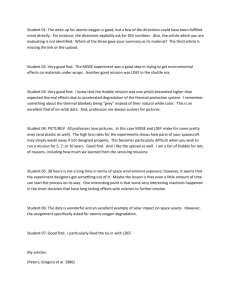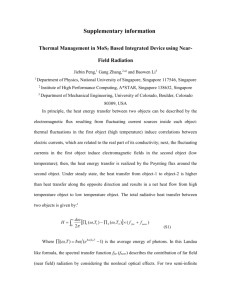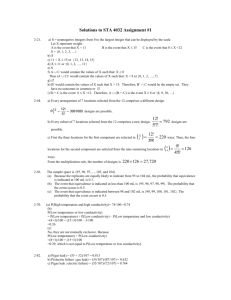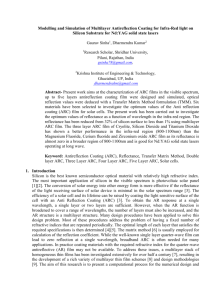GSTO_polarons_supplementary_ information
advertisement
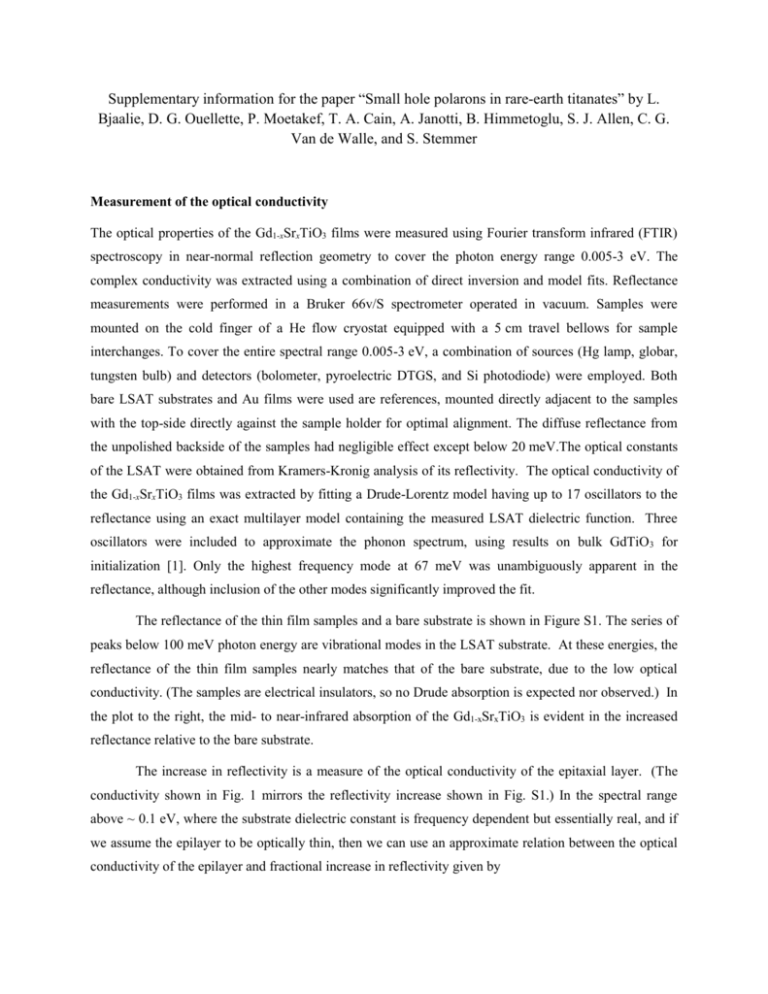
Supplementary information for the paper “Small hole polarons in rare-earth titanates” by L. Bjaalie, D. G. Ouellette, P. Moetakef, T. A. Cain, A. Janotti, B. Himmetoglu, S. J. Allen, C. G. Van de Walle, and S. Stemmer Measurement of the optical conductivity The optical properties of the Gd1-xSrxTiO3 films were measured using Fourier transform infrared (FTIR) spectroscopy in near-normal reflection geometry to cover the photon energy range 0.005-3 eV. The complex conductivity was extracted using a combination of direct inversion and model fits. Reflectance measurements were performed in a Bruker 66v/S spectrometer operated in vacuum. Samples were mounted on the cold finger of a He flow cryostat equipped with a 5 cm travel bellows for sample interchanges. To cover the entire spectral range 0.005-3 eV, a combination of sources (Hg lamp, globar, tungsten bulb) and detectors (bolometer, pyroelectric DTGS, and Si photodiode) were employed. Both bare LSAT substrates and Au films were used are references, mounted directly adjacent to the samples with the top-side directly against the sample holder for optimal alignment. The diffuse reflectance from the unpolished backside of the samples had negligible effect except below 20 meV.The optical constants of the LSAT were obtained from Kramers-Kronig analysis of its reflectivity. The optical conductivity of the Gd1-xSrxTiO3 films was extracted by fitting a Drude-Lorentz model having up to 17 oscillators to the reflectance using an exact multilayer model containing the measured LSAT dielectric function. Three oscillators were included to approximate the phonon spectrum, using results on bulk GdTiO 3 for initialization [1]. Only the highest frequency mode at 67 meV was unambiguously apparent in the reflectance, although inclusion of the other modes significantly improved the fit. The reflectance of the thin film samples and a bare substrate is shown in Figure S1. The series of peaks below 100 meV photon energy are vibrational modes in the LSAT substrate. At these energies, the reflectance of the thin film samples nearly matches that of the bare substrate, due to the low optical conductivity. (The samples are electrical insulators, so no Drude absorption is expected nor observed.) In the plot to the right, the mid- to near-infrared absorption of the Gd1-xSrxTiO3 is evident in the increased reflectance relative to the bare substrate. The increase in reflectivity is a measure of the optical conductivity of the epitaxial layer. (The conductivity shown in Fig. 1 mirrors the reflectivity increase shown in Fig. S1.) In the spectral range above ~ 0.1 eV, where the substrate dielectric constant is frequency dependent but essentially real, and if we assume the epilayer to be optically thin, then we can use an approximate relation between the optical conductivity of the epilayer and fractional increase in reflectivity given by 2 2 1 Repi sub Ysub cos t 1 Y 2 cos2 1 Y0 cos i . 4t Rsub i 0 Here, is the optical conductivity, t the epilayer thickness, Repi-sub and Rsub, the reflectivity of the composite and substrate respectively, and the angles of incidence and transmission and Ysub and Yo the wave admittance of the LSAT and free space respectively. While this is only an approximate expression for the optical conductivity, we can use it to estimate the relation between uncertainties in the optical conductivity and apparent uncertainties in the fractional change in reflection: 2 cos2 t Repi sub 1 Ysub 1 Y0 cos i . 2 2 Rsub 4t Y0 cos i The estimated uncertainty in the fractional increase in reflectivity is shown in S1. The resulting uncertainty in optical conductivity is shown in Fig. 1. References 1. D. A. Crandles, T. Timusk, J. D. Garrett, and J. E. Greedan, Phys. Rev. B 49, 4299 (1994). Figures Figure S1: Near-normal reflectance of Gd1-xSrxTiO3 films on LSAT substrate. For the Gd0.87Sr0.13TiO3 film, data was not taken below 0.07 eV. Left: scaled to show all data. Right: Scaled to highlight near-IR absorption attributed to polaron and Mott-Hubbard excitations. Also shown is an estimate of the fractional reflectance uncertainty as a function of frequency for the GdTiO3 thin film (the uncertainties are the same for the other samples).


